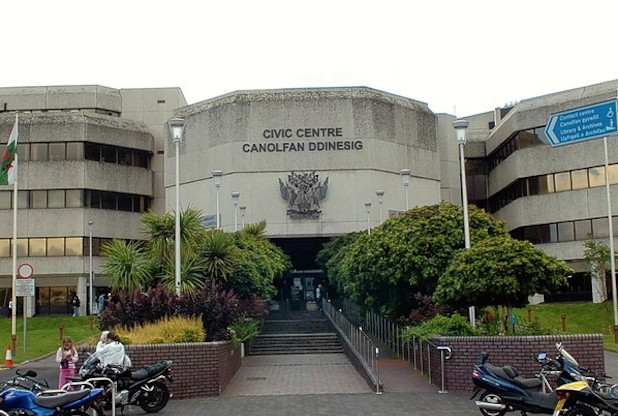SWANSEA Council has been building up its workforce in recent years, particularly social services staff.
Given our ageing population and the crucial role the likes of social workers, family support workers and domiciliary carers play, this would be welcomed by many.
It’s also the case that the council’s budget has risen – quite a lot, in fact – and that council tax has increased to help fund it.
But does some of this jar with Swansea Labour’s mantra that it is short-changed by what it regularly refers to as Conservative UK Government austerity?
Rarely does an opportunity pass in a council debate for a cabinet member to labour (no pun intended) this point. Of course, politics is politics, and Liberal Democrat councillors sometimes join in the Tory budget bashing, although some might argue that the tightening of the nation’s finances was at its most pronounced during the Conservative-Liberal Democrat coalition of 2010-2015, in the aftermath of the global financial crash.
Some Conservative councillors in Swansea hit back in debates, arguing that sufficient money is indeed flowing across the border from Westminster although Labour ones – by far the majority – do tend to have the last word.
In this article the Local Democracy Reporting Service looks at council workforce numbers from 2016-17 to 2022-23, which have been provided in an answer to a question by councillors, and also how much the authority received in funding, including council tax, and the state of inflation.
A word about local authority funding – it’s complex, but in a nutshell most of the money councils get for their day-to-spending comes from the Welsh Government. The Welsh Government receives its funding from the UK Government. So this article also looks at how much Cardiff Bay has received from Westminster.
In 2016-17 the council had 5,785 full and part-time staff, not including teachers. The highest proportion (2,107) worked in the environment, waste and transport department – known as the place department – followed by social services (882).
The number declined a little the following financial year, then rose steadily, dropped for one year, and then climbed again – reaching 6,615 in 2022-23. By then there were considerably more social services staff (1,194) and some more in the bafflingly-named place department (2,117). That’s a rise of 14.3% in the overall workforce – although it’s worth noting that the proportion of part-time workers increased slightly more than full-time ones.
All councils would like more staff – and Swansea has 18 job adverts at the time of writing – but the 14.3% increase shows that Swansea is recruiting and retaining, notwithstanding that many employees have left, with some taking early retirement or voluntary redundancy.
In terms of funding, Swansea received £307.7 million from the Welsh Government in 2016-17 for day-to-day expenditure. This has increased since, particularly during the lengthy Covid period when councils seemed to be doing everything. In 2022-23 it received £386.5 million – a rise of 25.6% in seven years.
Council tax – remember, a relatively small proportion of local authority funding – was £1,176 for Band D taxpayers in Swansea in 2016-17. It is set by councillors before the start of a new financial year and has increased since. It stood at £1,462 in 2022-23, although you actually pay more because of the South Wales Police precept and, for some residents, a town or community council precept. Sticking with the county council element of the tax, that’s a rise of 24.3%.
The Welsh Government, which decides how to allocate its UK Government funding, received £14.5 billion in a block grant from Westminster in 2016-17. The figure has fluctuated since – peaking at £20.8 billion in 2020-21 and tailing off to £18.4 billion in 2022-23. So overall a rise of 26.8%.
Inflation – consumer price inflation to be precise – at the beginning of 2016-17 in the UK was just 0.3%, according to the Office for National Statistics. Inflation fluctuates month by month, eroding spending power when it rises. It started to hover above 4% in autumn 2021 as bottlenecks squeezed the supply of goods, and then spiked further following Russia’s invasion of Ukraine in February 2022. By the beginning of 2022-23 it was 9% (the latest figure, July 2023, was 6.8%).

Higher energy and wage costs linked to inflation have hit councils hard, given that many of their buildings are old and draughty and that the staff wage bill accounts for so much of their outgoings. Swansea Council has set aside millions of pounds from its budget to cushion the energy blow, which only really hit in April this year when previous energy contracts expired.
Asked to comment on the rise in staff numbers and the increased funding the council receives, and whether this paints a different picture to the one of austerity and being short-changed by Westminster, Swansea Labour said the authority continued to face “unprecedented budget pressures”.
“We have seen the trebling of energy bills since 2022, soaring interest rates and nationally negotiated local Government staff pay rises – none of which have been funded by central Government,” it said.
“All local authorities are managing pressures on council services that are worse than they were even at the height of austerity.
“In Swansea we have had to make just under £25 million savings this (financial) year and anticipate having to find in excess of £20 million – maybe even growing to as much as £35 million – in savings next year.
“Unless central Government adequately funds local councils then Swansea, like all local authorities, faces some very tough and difficult decisions ahead.”
The statement added: “The staff changes are due to a number of unavoidable factors. We have recruited extra staff in social care due to the significant increase in demand for support from vulnerable people, particularly post-Covid. Due to the pandemic, we were required to recruit a new track and trace team.”
Councils are already making plans for the next financial year, hoping for some early funding clarity. As winter nears, politicians will clamour for extra cash, and send out messages to manage expectations. Come February or early March, councillors will clash across debating chambers in Wales as budgets are set, and another load of numbers will be viewed through differing political prisms.

















